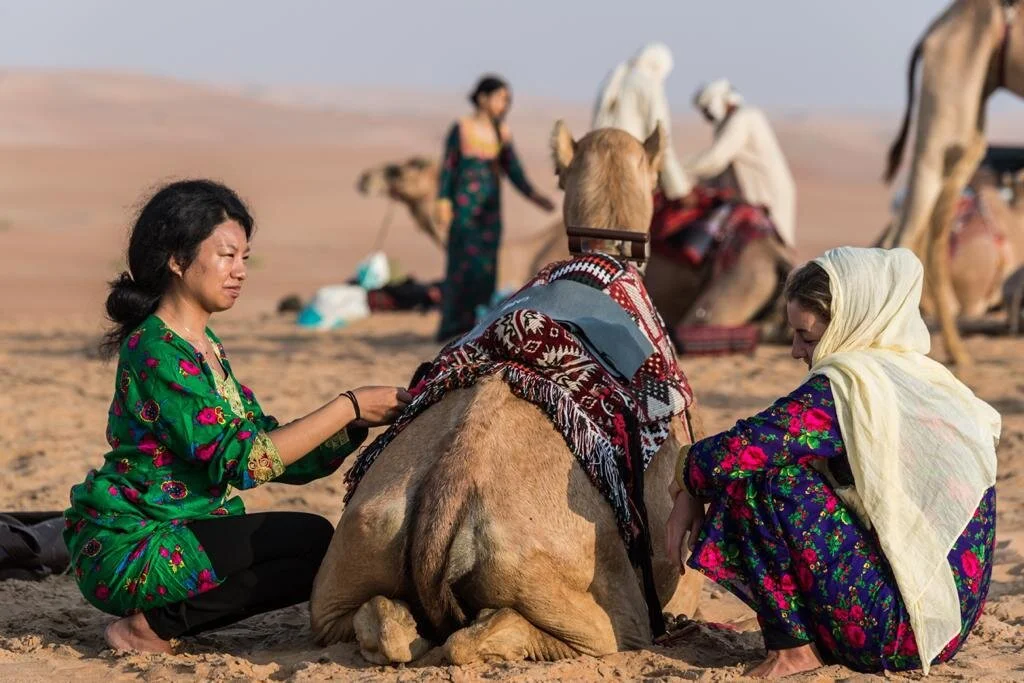Ever since I moved to this part of the world, its vast deserts have captivated me. I have had the chance to travel through them by car countless times, scale high dunes and cross through big bowls. I have slept on the bare sand under the stars around a fire, I had to surrender to its strength and dig out the car. The desert’s grains always found their way back to my apartment and even across oceans all the way to Germany. Never would I tire of the endless views of rolling dunes, winds sweeping across and forming sharp edges or soft waves. The silence of the desert can put the rest of the world and the city’s noise on mute and plays its own beautiful song.
The idea to cross these lands on the back of a camel for fourteen days seems daunting to many, uncomfortable and crazy to most. Yet, for me, a trip of such sort was the perfect escape. With a group of ten to fifteen riders, depending on the day, and several support cars to assist with navigation, medical cases, and with capturing the journey, we set out under the patronage of Sheikh Hamdan Heritage Centre. The Camel Trek has turned into an annual event, with this year being the 6th edition with a new and longer route than previous years.
The days started with the call to prayer, we rose early, from our thick sleeping bags, to roll them up, and to store them with the rest of our few belongings on the back of a trailer. After a hot cup of tea or coffee by the fire, accompanied by Arabic chatter, it was time to go and prepare the camels for the day’s trek. I usually carried some dates for my camel and spent some extra time next to him. I wanted to express my gratefulness and appreciation for him, for carrying me day in and day out with a sense of determination and pure endurance and patience.
We rode between seven and eleven hours per day, depending on how challenging the terrain was. We rode as a caravan most of the time, often in silence, one camel trailing behind another. A few times, I had the pleasure of being the first camel, which then demanded more attention to direction and pace. As a passenger on the camel bus, I didn’t have to think and decide much. I just had to ride, take care of my camel, look out for the others. For hours, all there was to see, was sand dune after sand dune - zero reference points apart from the height and heat of the sun to take a guess at the time that had passed. Even though we rode in December, the sun was burning, yet there was no escape from the rays and only a few days on which the sky was overcast, resulting in sticky humidity beneath the clouds.
Often, I thought of the nomads who did not endure a journey of such kind to find peace or to escape their reality. Their travels were full of uncertainty, scarcity of lifes essentials and danger.
I was on a journey to rid myself of comfort, and distraction, to let myself discover something new about myself. I experienced a true sense of just being. My mind was only filled with observations of the now, there was no before and no after, just now.
Perhaps we embark on wandering to find that now. We wander without most of our belongings, we seek places with little association, we observe nature and its beauty, and we calm our thoughts and our constantly racing mind to arrive in that very moment of now.
Linda Krockenberger is an avid Wanderer that has found her place among the hills of the United Arab Emirates. Having explored more lands the most, her story holds true to our philosophy of existence.
Find out about her next adventures on her instagram.












